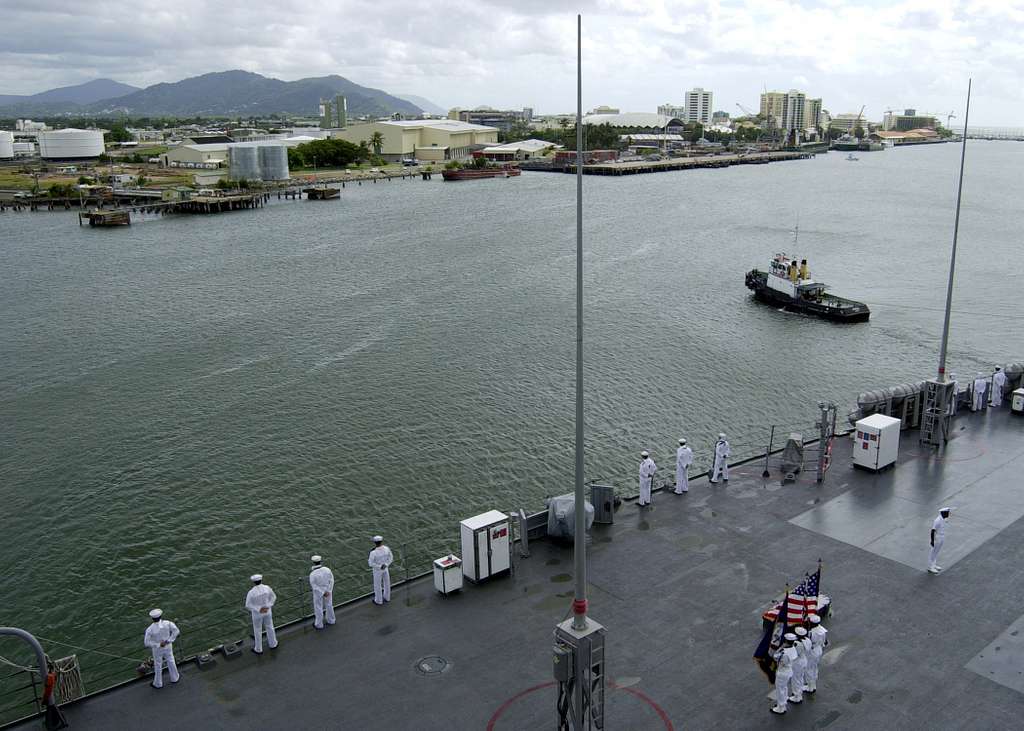
Nations must regularly ask themselves how they are to meet the challenges of their strategic context. The defence strategic review commissioned by the Australian government set out to assess Australia’s force posture, structure and capability. But its biggest takeaways were as much about the country’s underlying strategic mindset as they were about defensive details.
At the review’s heart was a clear reassertion of the strategic importance of northern Australia, with a renewed focus on ensuring it is resilient and prepared for its role in meeting future challenges.
It can be tempting to keep alive a dated understanding of Australia’s north. For instance, state and territory governments continue to market their tourism wonders around a kind of inhospitable schtick, with campaigns targeting adventure tourists and focusing on ‘getting away’ to somewhere remote from the rest of the country. While some of this is true, it paints a quiet picture that undersells the level of economic activity happening in northern Australia.
While spread out, Australia’s north is an export powerhouse. Yet it has been truly terrible at telling that story. Few truly understand how to do business across the vast region.
Remote Australia is different from metropolitan Australia in several ways.
Metropolitan Australia is a world-class and sophisticated economy, providing deep labour markets and skills availability, broad-based service and supply sectors, and short supply chains.
Remote Australia, for its part, has a mix of world-scale and world-competitive industries spread much more thinly across a large region, many small-scale localised businesses providing services and products to small population centres, and world-class industrial infrastructure—if alongside more limited social infrastructure and longer and more vulnerable supply chains.
Given these differences, most organisations of any scale would naturally prefer to base themselves in metropolitan Australia. While there are disincentives when it comes to congestion and some higher costs, the attraction of a city’s mature services economy is compelling. Logistics, forward planning, and service and supply-chain development all require less investment than they would in northern Australia.
But the DSR has identified that defence does not have this choice. Geography is important in national defence, and the review reflects this, arguing that defending Australia involves mastering its north.
This means defence leaders need to engage in Australia’s remote economy, not its metropolitan economy. Their success largely depends on understanding this context and adopting a mindset designed to succeed in remote Australia.
Leaders in northern Australia’s key industries—resources, energy and agriculture—understand this challenge exceptionally well. Unlike in a city, remote businesses must analyse their geographical location and understand in detail its strengths and weaknesses. They must then invest a great deal in building robust supply chains and product routes to markets. They need to plan well in advance methods to sustain their workforce year in and year out. In the process, they inevitably build economic and social partnerships with their host communities.
Defence has long done this, too, and it has led to many successes, but the shift it identifies from a ‘long peace’—wherein Australia would have 10 years to prepare for a direct attack once an adversary has determined to do so—demands a fresh take. The review has pointed to new challenges and expectations which will require accelerated tempo and surge capacity to resolve.
So, what do Defence decision-makers need to change to better operate in remote Australia in the coming years?
Defence must be more flexible with information and forgo a ‘need to know’ culture when operating in remote Australia. Local leaders will be crucial partners in responding to the challenges ahead, both in the political arena and in local industry. Business is unlikely to invest in extra capacity and capabilities unless there is some investment in genuine market signalling.
Defence must overcome its fear that local authorities always want to ‘cost shift’ onto them. With proper engagement and strong negotiation, Defence should trust that it can secure a more mature outlook from partners. Crucially, local authorities can better invest in ways that assist national defence if they understand the nature of operational challenges.
To thrive in northern Australia, local industry must understand its geographical context—any environmental impact statement shows that. Defence, local authorities and local industry must work together to tap into this and foster the same mindset.
There will need to be a collective understanding of the power of building long-term economic relationships. Local authorities, local industry and Defence need to collaborate more strongly than ever to join the dots required to navigate the challenges remote Australia will throw at them.
Consider the region from Darwin to Katherine. Critical decisions will be made in this area in coming years that affect land tenure, clearances, housing and industry, public infrastructure, community services, utilities, disaster resilience, and jobs and training. Australia cannot miss the opportunity to align these decisions with national defence.
Of course, there’ll be those that will call loudly for an alternative model—advocating a fly-in, fly-out model for defence operations in remote Australia with short-term logistical solutions. But they must explain how that works towards Australia’s goals in our current strategic context, and into the future. Limiting investment in partnerships, planning and physical infrastructure is a massive drag on future capacity if Australia hopes to quickly respond to extreme situations to its north.
With the review making crystal clear that time is of the essence, there is no time to waste establishing a new economic model for defence activities in northern Australia. Defence leaders must initiate this process and begin shaping the environment beyond the barbed wire of their bases. They must form and maintain genuine partnerships with local authorities, and from there, work with local industry to grow their capacity and capability to defend and develop Australia’s north well into the future.

